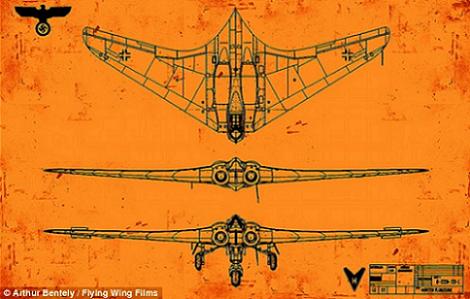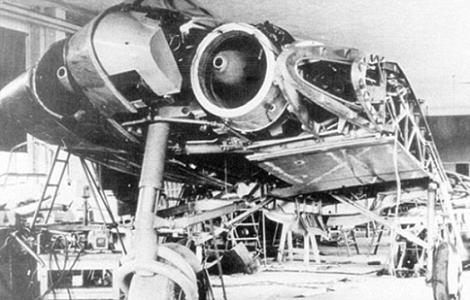| Google Tricks There are quite a few tricks that can be done when using the Google search I’m feeling lucky tab. I have colored blue the words that you need to type in. In normal ink color of course. Type: google 133t to see something odd. Type: elgoog to see things another way. Type: ewmew fudd to see elmer fudds way of speaking. Type: google gothic to go spooky. Type: google linux to see the linux penguin. Type: google easter egg to see the little bunny. Type: xx-klingon to see the Klingon version of google. Type: google piglatin for a latin type page Type: google bsd for a devil may care page ! Type: google gizoogle for a gizzy tpye page. Type: google mozilla for a firefox google search engine. Type: google bearshare for a google music sharing search engine ? Type: what’s the answer to life the universe and everything on the normal google search button. —————————————————— To find the weather in any place in the world, type: weather in then the place ie weather in London To find out what your currency is worth in other countries type: usd in yen for example or type: gbp in usd for British pounds to US Dollars or euros in yuan any currency you like will work. To do calculations just type: 12 +3 for example or 12 x 3 or whatever your sum is. click here to close |
| Switzerland Is One Gigantic Booby-Trap I finally had a chance to read John McPhee’s book La Place de la Concorde Suisse, his somewhat off-puttingly titled 1984 look at the Swiss military and its elaborately engineered landscape defenses.  To make a long story short, McPhee describes two things: how Switzerland requires military service from every able-bodied male Swiss citizen—a model later emulated and expanded by Israel—and how the Swiss military has, in effect, wired the entire country to blow in the event of foreign invasion. To keep enemy armies out, bridges will be dynamited and, whenever possible, deliberately collapsed onto other roads and bridges below; hills have been weaponized to be activated as valley-sweeping artificial landslides; mountain tunnels will be sealed from within to act as nuclear-proof air raid shelters; and much more.First, a quick look at the system of self-demolition that is literally built into the Swiss national infrastructure: To interrupt the utility of bridges, tunnels, highways, railroads, Switzerland has established three thousand points of demolition. That is the number officially printed. It has been suggested to me that to approximate a true figure a reader ought to multiply by two. Where a highway bridge crosses a railroad, a segment of the bridge is programmed to drop on the railroad. Primacord fuses are built into the bridge. Hidden artillery is in place on either side, set to prevent the enemy from clearing or repairing the damage. Further: Near the German border of Switzerland, every railroad and highway tunnel has been prepared to pinch shut explosively. Nearby mountains have been made so porous that whole divisions can fit inside them. There are weapons and soldiers under barns. There are cannons inside pretty houses. Where Swiss highways happen to run on narrow ground between the edges of lakes and to the bottoms of cliffs, man-made rockslides are ready to slide. The impending self-demolition of the country is “routinely practiced,” McPhee writes. “Often, in such assignments, the civilian engineer who created the bridge will, in his capacity as a military officer, be given the task of planning its destruction.”But this is where a weirdly fascinating, George Dante-esque artifice begins. After all, McPhee writes, why would Switzerland want anyone to know where the dynamite is wired, where the cannons are hidden, which bridges will blow, or where to find the Army’s top secret mountain hideaways and resupply shelters? But if you look closely, you start to see things. Through locked gates you see corridors in the sides of mountains—going on and on into the rock, with alight in the ceiling every five meters and far too many to count… Riding around Switzerland with these matters in mind—seeing little driveways that blank out in mountain walls, cavern entrances like dark spots under mountainside railroads and winding corniches, portals in various forms of lithic disguise—you can find it difficult not to imagine that almost anything is a military deception, masking a hidden installation. Indeed, at one point McPhee jokes that his local guide in Switzerland “tends to treat the army itself as if it were a military secret.”  McPhee points to small moments of “fake stonework, concealing the artillery behind [them],” that dot Switzerland’s Alpine geology, little doors that will pop open to reveal internal cannons that will then blast the country’s roads to smithereens. Later, passing under a mountain bridge, McPhee notices “small steel doors in one pier” hinting that the bridge “was ready to blow. It had been superceded, however, by an even higher bridge, which leaped through the sky above—a part of the new road to Simplon. In an extreme emergency, the midspan of the new bridge would no doubt drop on the old one.” It’s a strange kind of national infrastructure, one that is at its most rigorously functional—one that truly fulfills its promises—when in a state of cascading self-imposed collapse. I could easily over-quote my way to the end of my internet service here, but it’s a story worth reading. There are, for instance, hidden bomb shelters everywhere in an extraordinary application of dual-use construction. “All over Switzerland,” according to McPhee, “in relatively spacious and quiet towns, are sophisticated underground parking garages with automatic machines that offer tickets like tongues and imply a level of commerce that is somewhere else. In a nuclear emergency, huge doors would slide closed with the town’s population inside.” In any case, the book’s vision of the Alps as a massively constructed—or, at least, geotechnically augmented and militarily amplified—terrain is quite heady, including the very idea that, in seeking to protect itself from outside invaders, Switzerland is prepared to dynamite, shell, bulldoze, and seal itself into a kind of self-protective oblivion, hiding out in artificially expanded rocky passes and concrete super-basements as all roads and bridges into and out of the country are instantly transformed into landslides and dust. |
| The 10 Greatest Inventions For Lazy People Who’d have guessed that fast food, the ambrosia of lazy men everywhere, would find a way to get even lazier with the arrival of the new year? Last week, Burger King enthusiasts were all given reason to do a happy dance (from the couch): News broke that the McDonald’s competitor was officially starting delivery service in D.C., with goals of expansion depending on the response. Hey, the point of fast food has always been to provide customers the luxury of effort-free meals—now, junk foodies will additionally be spared the effort of heading out the door to score that Whopper Jr. Not bad! That said, BK is far from the first company to encourage us to have it our way sans finger-lifting. Over the years, advancements in technology have made it easier and easier for us to travel without moving—or leave the couch at all. From super practical to the super ridiculous, we decided to spare you some grunt work and present you with a list of our favorites. Before you, The 10 Greatest Inventions For Lazy People. 10.Crowdmug App  Sick of shelling out for bar covers only to discover that they’re completely abandoned—or worse, swarming with dudes and no redeemable females? This app was made for you, cousin. If surveying scenes live and in person has proved to be a letdown to you and your entourage one too many times, you can opt to invest that same cash (probably more) to get photos and real-time video of all your prospective stops for the night. The app will submit your request to the crowd, and those out at your bar of choice can respond and make what’s got to be some of the easiest money of their lives.9.Motorized Ice Cream Cone  For days when you’re feeling a little too beat (or self-important) to deal with the hassle that goes into polishing off an ice cream cone (uh…moving your mouth?), novelty gift company Perpetual Kid has a solution for you. For $9.99, these rotating Motorized Ice Cream Cone contraptions will eliminate all the grunt work. Merely turn it on and stick out your tongue. [Insert "That's What She Said" joke here.]8.Gmail’s “Canned Responses”  Breaking up is hard to do. So is responding to emails. Those that don’t have the patience for either, or wish to save themselves some serious copying and pasting, can turn to Gmail’s “Canned Responses” to act as their personal secretary. All one has to do is head over to Gmail Labs, scribe their message of choice and save it. From there, a simple click will allow you to send it to anyone, anytime. We’d just advise proceeding with caution, especially where names are concerned—the last thing you want is a schmaltzy email to your lady addressing the wrong girl. 7.Flowbee Here’s how it works: You simply rig the device to your vacuum cleaner and attach the correct “spacer,” depending on how many inches you’re aiming to chop. After that? Prepare to drink in the compliments, friend. At least in designated areas of Brooklyn. 6.Segway 5.(Literal) Butter Stick 4.Asahi Robocco BeerBot 3.iWavecube 600-Watt Personal Desktop Microwave Oven 2.Self-Lacing Sneakers 1.Selfy the EasyBed No word yet on when an accompanying pillow fluffer and crumb remover will be dropping, but we remain hopeful. |
| The Goldberg Brothers - The Inventors of the Automobile Air Conditioner Here’s a little fact for automotive buffs or just to dazzle your friends.The four Goldberg brothers, Lowell, Norman, Hiram, and Max, invented and developed the first automobile air-conditioner. On July 17, 1946, the temperature in Detroit was 97 degrees.
The four brothers walked into old man Henry Ford’s office and sweet-talked his secretary into telling him that four gentlemen were there with the most exciting innovation in the auto industry since the electric starter. Henry was curious and invited them into his office. They persuaded him to get into the car, which was about 130 degrees, turned on the air conditioner, and cooled the car off immediately. The old man got very excited and invited them back to the office, where he offered them $3 million for the patent. The brothers refused, saying they would settle for $2 million, but they wanted the recognition by having a label, ‘The Goldberg Air-Conditioner,’ on the dashboard of each car in which it was installed. Now old man Ford was more than just a little anti-Semitic, and there was no way he was going to put the Goldberg’s name on two million Fords. They haggled back and forth for about two hours and finally agreed on $4 million and that just their first names would be shown. And so to this day, all Ford air conditioners show – |
| What Kind Of Tool Is This? Thought you would enjoy this educational moment in American history. Can you name this strange old tool? Do you know what it is?  Tobacco Smoke Enemas (1750s – 1810s)The tobacco enema was used to infuse tobacco smoke into a patient’s rectum for various medical purposes, primarily the resuscitation of drowning victims. A rectal tube inserted into the anus was connected to a fumigator and bellows that forced the smoke towards the rectum. The warmth of the smoke was thought to promote respiration. Doubts about the credibility of tobacco enemas led to the popular phrase “blowing smoke up your ass.” |
The Worlds Biggest Combustion Engine The above image is of one of the worlds biggest engine’s. It is not a photo-shopped joke, but the real thing…amazing isn’t it! The worlds biggest engine however is the Wartsila-Sulzer RTA96-C. It is a turbo charged two stroke diesel engine and it is the most powerful and efficient low revolution engine in the world today. The Wartsila-Sulser is manufactured by the Aioi Works in Japan and is part of Japans Diesel United Ltd engine manufacturers. Below is an 89 foot long 44 foot wide 12 cylinder engine and I would not be far off to state that this engine is as big as an office block! What I find confusing is why they haven’t actually built the ship around the engine? How they actually get the 2000 ton engine out of the factory? And moreover install an engine of this size into a ship?  Well in actual fact, that is exactly what happens, the ship is indeed built around the engine. In the marine construction trade, all boats and ships including harbor tugs and fishing trawlers have the superstructure of the ship built around the engine. The only exceptions are small modest boats. Shipping companies and large vessel owners do not want to lose valuable space by having to allow access hatches for the installation and removal of the engine. More recently, ship building has changed with modern techniques, in that many ships today are built in individual modules, these manageable sections are then welded together as one unit. The engine-beds, along with the hull below it, are built and the engine is lifted into place, then the remainder of the engine component is constructed around the now ‘in-situ’ engine. With modern cranes that can now lift over a thousand tons, reasonably large marine engines can be lifted and positioned into a hull with comparative ease. Below for example, a 25 meter long, 400 ton crankshaft is maneuvered by crane, ready to be placed into an engine. A 400 ton crankshaft is about as serious as you want to get in the world of engineering.  After many thousands of nautical miles, actually calculated by engine/hours, these colossal engines need to be completely overhauled. When overhauling something of this size then its time to get the equally colossal equipment out. The ship will be dry docked and the portion of the hull that supports the engine-bed is cut away so that the engine-bed can be lowered and extracted. The new engine is fitted in reverse procedure to the method stated for removal. When however we are talking about the Wartsila-Sulzer RTA96-C, this super massive engine and its ultra low engine revolutions will invariably last the lifetime of the ship and will never need to be overhauled. If you were to hear one of these engines running flat out, you would believe that it was in reality, just ticking over.  These large, everlasting, highly durable engines are designed to power the worlds super oil tankers and large container ships. The Company that will eventually own these engines, will have them made to their own preferences. They usually request an engine construction of a single unit and single propeller design for ease of maintenance, and not surprisingly, any later troubleshooting. A single unit and single screw design has also proved over time to have a longer life span than double or even quad screws. Longevity of this engine design is based on less moving parts equals less stuff to wear out, which makes sense when you think about it. These engines are built in 6, 8, 10, 12 and 14 cylinder configurations. All the engines are straight or “inline”. The diameter of each cylinder is 3 foot 2 inches with a stroke of 8 foot 2 inches. The 12 cylinder version weighs in at 2000 metric tons and delivers 90,000 hp at 100 revs per minute, with best fuel economy at 53,244 hp at 90 rpm. When I mention economy, the 14 cylinder engine for example with a displacement of 25,480 liters ( 1.56 million cubic inches ) burns up 1,660 gallons of crude oil every hour, now that is what I cynically call good economy ! 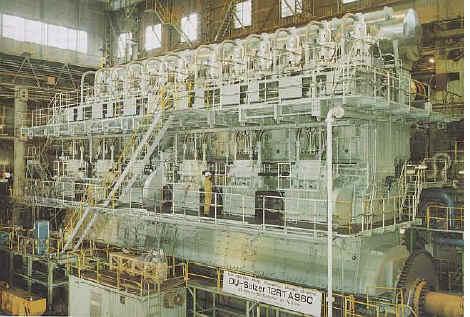 ———————————————————– RUNNING COSTS Mathematical calculations show us that 1,660 gallons are used every hour, this equals 39½ whole barrels of oil used every hour, this also equates as $3610 every hour the engine runs. These figures are worked out from the basis of crude oil @ $91.38 a barrel* $3610 every hour the engine runs or 27.6 gallons which equates as $60.00 every minute or 1 dollar a second! That is of course if the ship owners buy oil at trade price…if not then these figures are the absolute cheapest. An average 3 day trip or 72 hours, would cost the owners a cool $260,000. This also now helps us to see why we pay so much for our petrol, as petrol is a by-product of oil. (* price at time of publishing this webpage: edited 31st December 2010) ———————————————————– In the image below a worker at the factory is finalizing work on the cylinder block. This image shows the piston sleeves, the worker could quite easily have a nap inside one of the cylinder bores and no-one would notice! The engine studs are more like telegraph poles!  Below is shown the pistons that will soon be fitted into the engine. Unlike normal car pistons these 3 foot diameter pistons incorporate lots of holes and it is through these holes that oil is injected through valves to keep all the working parts at a maximum low wear tolerance. Massive amounts of constant lubrication is absolutely necessary or these big engines would seize up rather quickly. Despite the colossal amounts of power output produced by these behemoth engines, surprisingly low wear rates have actually been recorded. The cylinder’s liner wear for example is practically negligible at only about 0.03mm down for every 1000 hours of engine use…proving that the lubrication system these engines employ work very well. It must be remembered here that these engines work at about 20 times slower than a normal 2.0 litre car engine for example, and this is a major contributor to the life of the engine.  The image below depicts the 300 ton crankshaft of the 10 cylinder engine. There are also steps on the wall of the casing to enable mechanics to climb down into the engines sump! 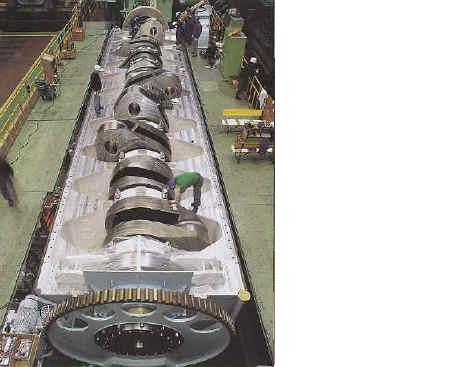 In the image below the pistons shell bearings are being fitted into the engine block. They are lowered into place by a crane and guided in by two workers and a supervisor. They keep all surfaces of the engine clean at this stage as any grit or dirt could later add wear to the engine or worse destroy it. So the workers are wearing special cloth overshoes so as not to leave any abrasions on the fine working surfaces. Also you may notice that sheeting is covering the rest of the engines crankcase bearing housing to keep the dust off. These engines cost many millions upon millions of dollars in fact more than the ship itself that they are installed into. This money is made back after one trip ( plus profit ) that the tanker will make though, so its not all bad news for the companies that purchase them. 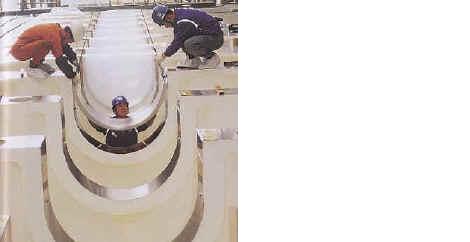 100,000 horse power was actually achieved on a test bed in the workshop with the 14 cylinder model, running the engine flat out at just under 102 rpm. 102 rpm may sound slow compared to a normal sized car engine that operates at about 2500 rpm but with an engine is as big as this, then fast engine revolutions are made obsolete by the shear power output. click here to close |
| How Many Uses For A Nuclear Weapon Can YOU Think Of? Ah, nuclear weapons! Having grown up while the Cold War was still going strong, I can almost think about nuclear bombs with a sentimental eye — though the threat of nuclear terrorism is still a possibility, we’re much further away from complete annihilation than we were back in my childhood. I still remember being frightened as a child at the possibility that someone, somewhere, for reasons I would never understand, might start the “big one” without warning. Now, of course, we’ve got huge stockpiles of nuclear weapons lying around. You might think that the only option is to dismantle the majority of them and hide the radioactive material somewhere safe and out of the way. If you thought that, you clearly don’t have enough imagination! Over the years, there have been quite a few suggestions as to how nuclear weapons might be used in a “productive” way. I’ve stumbled across a few of these over the past few weeks, and thought it would be interesting to compile a list of some of the ideas suggested — and even tried — as “peaceful” uses for nuclear explosions. I believe all of these fit the old statement, “If all you have is a hammer, everything looks like a nail.” Operation Chariot (1958). In 1958, the Atomic Energy Commission proposed the notion of creating an artificial harbor at Cape Thompson in Alaska by firing off a chain of nuclear explosions. The full-scale plan (outer outline) would have required 2.4 megatons of explosives, while the smaller version would have used a modest 460 kilotons.  Diagram of proposed Project Chariot detonations. (via Wikipedia) Operation Chariot was championed by none other than the father of the hydrogen bomb himself, physicist Edward Teller. Teller’s rather hawkish desire to produce bigger and better weapons and to use them in any way possible made him a rather controversial figure. At one time, he was even burned in effigy by a crowd of anti-nuclear activists! (I kinda wonder if Teller was the inspiration for Gene Hackman’s Lex Luthor in the 1978 “Superman” movie.) Natural gas stimulation (1973). Operation Chariot was part of a larger program known as Project Plowshare, whose goal was to find “peaceful” uses for nuclear weapons. Many of the ideas were similar to Chariot: digging tunnels, creating lakes, making big holes to dump nasty stuff into. One of the more unusual ideas proposed was the use of nuclear explosions deep underground to stimulate the flow of natural gas and make it easier to extract. In 1973, 3 bombs were exploded underground in an area north of Grand Junction, Colorado, but the result seems to have failed to meet expectations. Furthermore, the gas that was extracted was found to possess unacceptable amounts of radioactivity, which would not sit well with residential consumers. Project Oilsands (1959). Long before the 1973 test, the Canadian government was inspired by Project Plowshare to try their own peaceful uses of nukes for energy extraction. The strategy, however, was different: Canada hoped to use the high heat of the nuclear blast to melt the hard bitumen deposits of the Athabasca oil sands in Alberta, making them soft enough to be extracted by ordinary oilfield techniques. 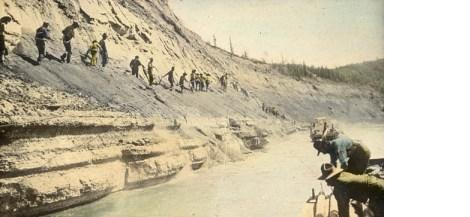 Image of people working along the river in the Oil Sands region, c. 1900. The project was actually approved in 1959, and a site selected, but by the beginning of the 1960s the Canadian government adopted a strict “no nuclear tests” policy, which led to the project’s cancellation. (More information) Project Taiga (1973). The Soviet Union, of course, was not idle during this period. They developed their own “peaceful nuclear weapons” program, “Nuclear Explosions for the National Economy“. The Soviets had many of the same ideas as the U.S. for using nuclear “tools”, but they implemented more of them, with over 200 detonations in two separate programs. One of these projects — Project Taiga — was intended to dig a canal between the Pechora River and the Kama, a tributary of the Volga. A triple blast of weapons dug a channel some 600 meters long; however, analysis suggested that hundreds of detonations would be needed to complete excavation, and the project was ended. Deep Seismic Sounding (1970s). Starting in 1971, the Soviets also used nuclear explosions to generate seismic waves that could penetrate deep into the Earth and be used to probe for natural resources. The Soviets did a lot of seismic measurements this way, with an astonishing number of underground detonation sites, as the figure below demonstrates. As a happy side-effect, however, the measurements also allowed very good measurements of the deep structure of the Earth, providing information of the crust and mantle of the Earth down to 200 km.  Image showing locations of PNEs (“peaceful nuclear explosions”) used for seismic sounding. (From Schiemer and Borg, Science 226 (1984), 787.) Project Orion (1958). Want to go really fast in space? Just detonate some nuclear weapons behind your spacecraft and ride the blast! This was the crux of Project Orion, introduced in 1958, though the idea possibly goes further back to the mathematician Stanislaw Ulam in 1946.  Sketch of the key components of a Project Orion spacecraft. Actually, Project Orion is not a completely crazy idea, and such a “nuclear pulse drive” would apparently be much more effective than traditional chemical propellant rockets. However, concerns about fallout (and presumably radiation to the passengers), combined with the partial nuclear test ban treaty of 1963, led to its end. Nuking a hurricane? I don’t know that this technique has actually been seriously considered by any government, but enough people must have asked about it to justify the Hurricane Research Division of the NOAA putting an answer on its FAQ! Short answer: the amount of energy released in a nuclear explosion is negligible compared to the energy of a hurricane. The nuclear blast would have no effect other than making the storm radioactive.  Image from orbit of Hurricane Isabel in 2003. You don’t want something this big and angry radioactive, too. Reading this, I was reminded of an old quote from a “Call of Cthulhu” game reference, Cthulhu Now, in which one fights the forces of supernatural evil in modern times. One FAQ in the game book was: “What happens when you nuke Cthulhu?” The answer was, in effect: “His body reforms in 15 minutes — but now he’s radioactive!” Nuking an oil well (1960-1980s). When the Deepwater Horizon oil rig exploded in the Gulf of Mexico in 2010, resulting in a catastrophic oil spill, many people came forth with ideas to plug the spewing well — including the nuclear option. Apparently this idea was not unprecedented: the Soviet Union closed or attempted to close five leaking wells between 1966 and 1981 with nuclear blasts, apparently all but the last of them successful. The idea was dismissed in the case of the Deepwater Horizon, however, as it was unclear that it would be successful: and it would just as likely make the problem worse. Nuking a volcano? This is another idea that doesn’t seem to have been seriously considered by any government, but has been asked about by enough people that articles have been written about it. The short answer is similar to that for hurricanes: the forces involved in a volcanic eruption are so tremendous that the nuke would likely not affect it. ******* There’s one unifying principle behind all of the ideas for “peaceful nuclear weapons” here: the ideas are at best stunningly risky, and at worst would have extremely bad consequences! However, the remarkable range of imagined uses (and there are others I didn’t cover) is a testimony to the imagination, and perhaps optimism, of humankind. click here to close |
| Hitler's Stealth Bomber Luck for all of us that he ran out of time.Keep in mind, this aircraft was built in the 1940′s. It resembles our Stealth bombers of today. Had Hitler got these into production sooner, the world wouldn’t be what it is today. 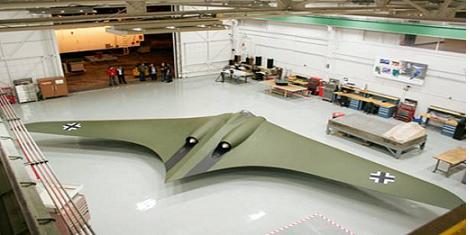 With its smooth and elegant lines, this could be a prototype for some future successor to the stealth bomber. But this flying wing was actually designed by the Nazis 30 years before the Americans successfully developed radar-invisible technology. Now an engineering team has reconstructed the Horten Ho 2-29 from blueprints, with startling results. 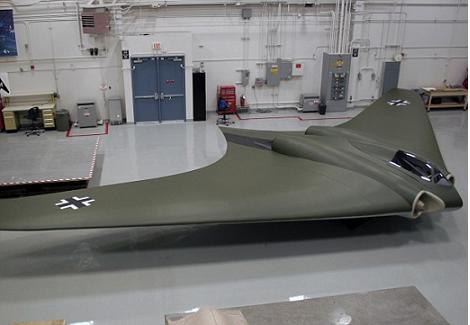 Blast from the past: The full-scale replica of the Ho 2-29 bomber was made with materials available in the ‘40s. 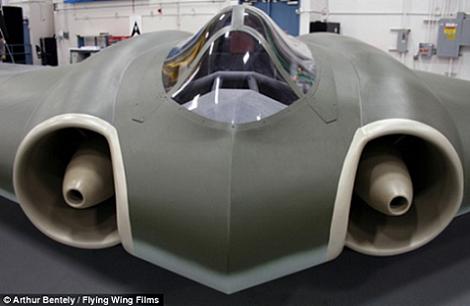 Futuristic: The stealth plane design was years ahead of its time. It was faster and more efficient than any other plane of the period and its stealth powers did work against radar. Experts are now convinced that given a little bit more time, the mass deployment of this aircraft could have changed the course of the war. 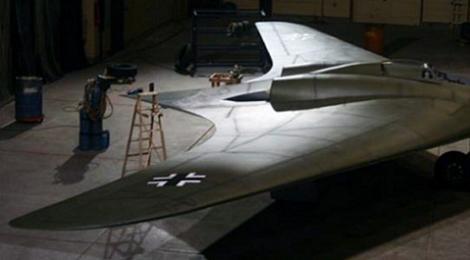 The plane could have helped Adolf Hitler win the war The plane could have helped Adolf Hitler win the warFirst built and tested in the air in March 1944, it was designed with a greater range and speed than any plane previously built and was the first aircraft to use the stealth technology now deployed by the U.S. in its B-2 bombers. Thankfully Hitler’s engineers only made three prototypes, tested by being dragged behind a glider, and were not able to build them on an industrial scale before the Allied forces invaded. From Panzer tanks through to the V-2 rocket, it has long been recognized that Germany ‘s technological expertise during the war was years ahead of the Allies. But by 1943, Nazi high command feared that the war was beginning to turn against them, and were desperate to develop new weapons to help turn the tide. Nazi bombers were suffering badly when faced with the speed and maneuverability of the Spitfire and other Allied fighters. Hitler was also desperate to develop a bomber with the range and capacity to reach the United States. In 1943 Luftwaffe chief Hermann Goering demanded that designers come up with a bomber that would meet his requirements, one that could carry 1,000 kg over 1,000km flying at 1,000km/h. A full scale replica of the Ho 229 bomber made with materials available in the 1940s at preflight.  A wing section of the stealth bomber. The jet intakes were years ahead of their time. Two pilot brothers in their thirties, Reimar and Walter Horten, suggested a flying wing design they had been working on for years. They were convinced that with its drag and lack of wind resistance such a plane would meet Goering’s requirements. Construction on a prototype was begun in Goettingen in Germany in 1944. The centre pod was made from a welded steel tube, and was designed to be powered by a BMW 003 engine. The most important innovation was Reimar Horten’s idea to coat it in a mix of charcoal dust and wood glue. 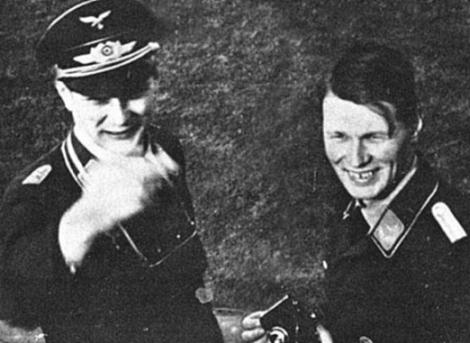
Vengeful: Inventors Reimar and Walter Horten were inspired to build the Ho 2-29 by the deaths of thousands of Luftwaffe pilots in the Battle of Britain. The 142-foot wingspan bomber was submitted for approval in 1944, and it would have been able to fly from Berlin to NYC and back without refueling, thanks to the same blended wing design and six BMW 003A or eight Junker Jumo 004B turbojets. They thought the electromagnetic waves of radar would be absorbed, and in conjunction with the aircraft’s sculpted surfaces the craft would be rendered almost invisible to radar detectors. The plane was covered in radar absorbent paint with a high graphite content, which has a similar chemical make-up to charcoal. This was the same method eventually used by the U.S. in its first stealth aircraft in the early 1980s, the F-117A Nighthawk. Thanks to the use of wood and carbon, jet engines integrated into the fuselage, and its blended surfaces, the plane could have been in London eight minutes after the radar system detected it. It took them 2,500 man-hours and $250,000 to construct, and although their replica cannot fly, it was radar-tested by placing it on a 50 ft articulating pole and exposing it to electromagnetic waves. The team demonstrated that although the aircraft is not completely invisible to the type of radar used in the war, it would have been stealthy enough and fast enough to ensure that it could reach London before Spitfires could be scrambled to intercept it. |
|
Hedwig Kiesler It started with a skin flick. In 1933, a beautiful, young Austrian woman took off her clothes for a movie director. She ran through the woods, naked. She swam in a lake, naked, pushing well beyond the social norms of the period.
The most popular movie in 1933 was King Kong. But everyone in Hollywood was talking about that scandalous movie with the gorgeous, young Austrian woman. Louis B. Mayer, of the giant studio MGM, said she was the most beautiful woman in the world. The film was banned practically everywhere, which of course made it even more popular and valuable. Mussolini reportedly refused to sell his copy at any price. The star of the film, called Ecstasy, was Hedwig Kiesler. She said the secret of her beauty was “to stand there and look stupid.” In reality, Kiesler was anything but stupid. She was a genius. She’d grown up as the only child of a prominent Jewish banker. She was a math prodigy. She excelled at science. As she grew older, she became ruthless, using all the power her body and mind gave her. Between the sexual roles she played, her tremendous beauty, and the power of her intellect, Kiesler would confound the men in her life, including her six husbands, two of the most ruthless dictators of the 20th century, and one of the greatest movie producers in history. Her beauty made her rich for a time. She is said to have made – and spent – $30 million in her life. But her greatest accomplishment resulted from her intellect, and her invention continues to shape the world we live in today. Today, when you use your cell phone or, over the next few years, as you experience super-fast wireless Internet access (via something called “long-term evolution” or “LTE” technology), you’ll be using an extension of the technology a 20- year-old actress first conceived while sitting at dinner with Hitler. At the time she made Ecstasy, Kiesler was married to one of the richest men in Austria. Friedrich Mandl was Austria ‘s leading arms maker. His firm would become a key supplier to the Nazis. Mandl used his beautiful young wife as a showpiece at important business dinners with representatives of the Austrian, Italian, and German fascist forces. One of Mandl’s favorite topics at these gatherings – which included meals with Hitler and Mussolini – was the technology surrounding radio-controlled missiles and torpedoes. Wireless weapons offered far greater ranges than the wire-controlled alternatives that prevailed at the time. As a Jew, Kiesler hated the Nazis. She abhorred her husband’s business ambitions. Mandl responded to his willful wife by imprisoning her in his castle, Schloss Schwarzenau. In 1937, she managed to escape. She drugged her maid, snuck out of the castle wearing the maid’s clothes, and sold her jewelry to finance a trip to London.
(She got out just in time. In 1938, Germany annexed Austria. The Nazis seized Mandl’s factory. He was half Jewish. Mandl fled to Brazil. Later, he became an adviser to Argentina’s iconic populist president, Juan Peron.) In London, Kiesler arranged a meeting with Louis B. Mayer. She signed a long-term contract with him, becoming one of MGM’s biggest stars. She appeared in more than 20 films. She was a co-star to Clark Gable, Judy Garland, and even Bob Hope. Each of her first seven MGM movies was a blockbuster. But Kiesler cared far more about fighting the Nazis than about making movies. At the height of her fame, in 1942, she developed a new kind of communications system, optimized for sending coded messages that couldn’t be “jammed.” She was building a system that would allow torpedoes and guided bombs to always reach their targets. She was building a system to kill Nazis. By the 1940s, both the Nazis and the Allied forces were using the kind of single- frequency radio-controlled technology Kiesler’s ex-husband had been peddling. The drawback of this technology was that the enemy could find the appropriate frequency and “jam” or intercept the signal, thereby interfering with the missile’s intended path. Kiesler’s key innovation was to “change the channel.” It was a way of encoding a message across a broad area of the wireless spectrum. If one part of the spectrum was jammed, the message would still get through on one of the other frequencies being used. The problem was, she could not figure out how to synchronize the frequency changes on both the receiver and the transmitter. To solve the problem, she turned to perhaps the world’s first techno-musician, George Anthiel. Anthiel was an acquaintance of Kiesler who achieved some notoriety for creating intricate musical compositions. He synchronized his melodies across twelve player pianos, producing stereophonic sounds no one had ever heard before. Kiesler incorporated Anthiel’s technology for synchronizing his player pianos. Then, she was able to synchronize the frequency changes between a weapon’s receiver and its transmitter. On August 11, 1942, U.S. Patent No. 2,292,387 was granted to Antheil and “Hedy Kiesler Markey,” which was Kiesler’s married name at the time. Most of you won’t recognize the name Kiesler. And no one would remember the name Hedy Markey. But it’s a fair bet than anyone reading this of a certain age will remember one of the great beauties of Hollywood’s golden age ~ Hedy Lamarr. That’s the name Louis B. Mayer gave to his prize actress. That’s the name his movie company made famous.
Meanwhile, almost no one knows Hedwig Kiesler – aka Hedy Lamarr - was one of the great pioneers of wireless communications. Her technology was developed by the U.S. Navy, which has used it ever since. You’re probably using Lamarr’s technology, too. Her patent sits at the foundation of “spread spectrum technology,” which you use every day when you log on to a wi-fi network or make calls with your Bluetooth-enabled phone. It lies at the heart of the massive investments being made right now in so-called fourth-generation “LTE” wireless technology. This next generation of cell phones and cell towers will provide tremendous increases to wireless network speed and quality, by spreading wireless signals across the entire available spectrum. This kind of encoding is only possible using the kind of frequency switching that Hedwig Kiesler invented. |









